Gallery: Dark Matter Throughout the Universe
Galaxies Protected by Dark Matter
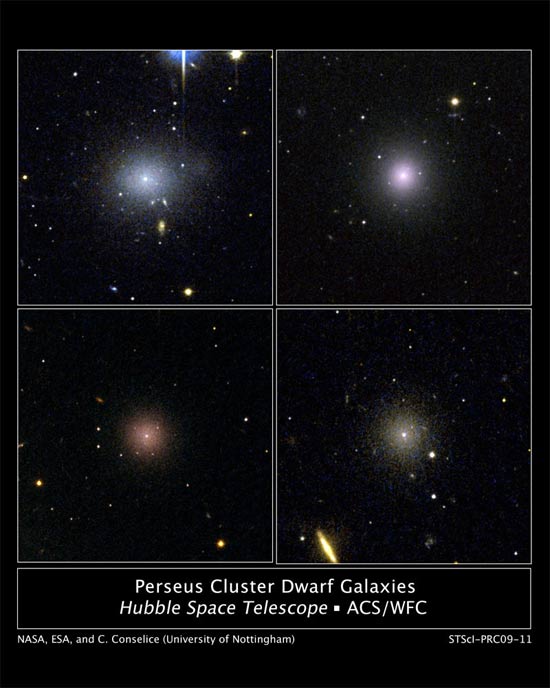
These four dwarf galaxies are part of a census of small galaxies in the tumultuous heart of the nearby Perseus galaxy cluster. The images, taken by NASA's Hubble Space Telescope, are evidence that the undisturbed galaxies are enshrouded by a "cushion" of dark matter, which protects them from their rough-and-tumble neighborhood.
Hunt for Elusive Dark Matter Goes Virtual
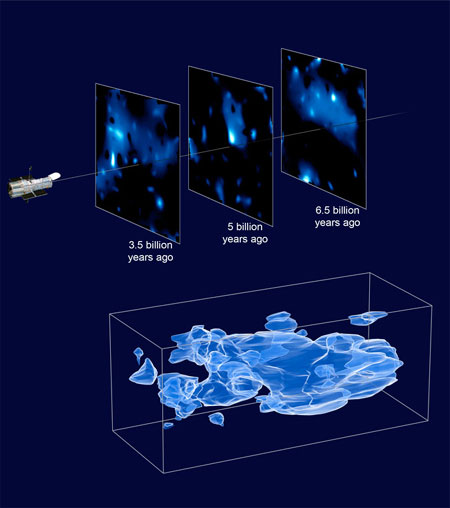
Researchers created a 3D map of dark matter in a large portion of the universe by combining gravitational lensing data from more than half a million galaxies scattered across a range of distances from Earth. The three axes of the box (bottom) correspond to sky position, and distance from Earth, increasing from left to right.
Chubby Galaxy Cluster Suggests Dark Energy Was Stronger Long Ago
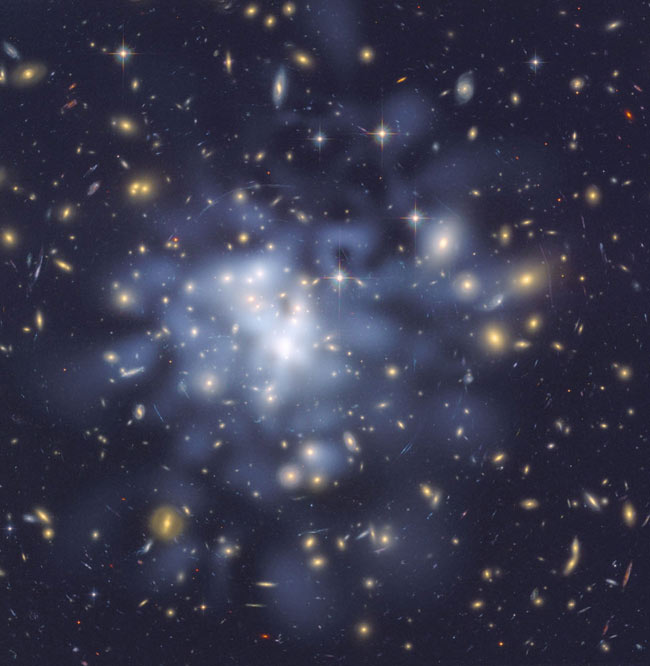
This NASA Hubble Space Telescope image shows the distribution of dark matter in the center of the giant galaxy cluster Abell 1689, containing about 1,000 galaxies and trillions of stars.
Dark Matter Simulations
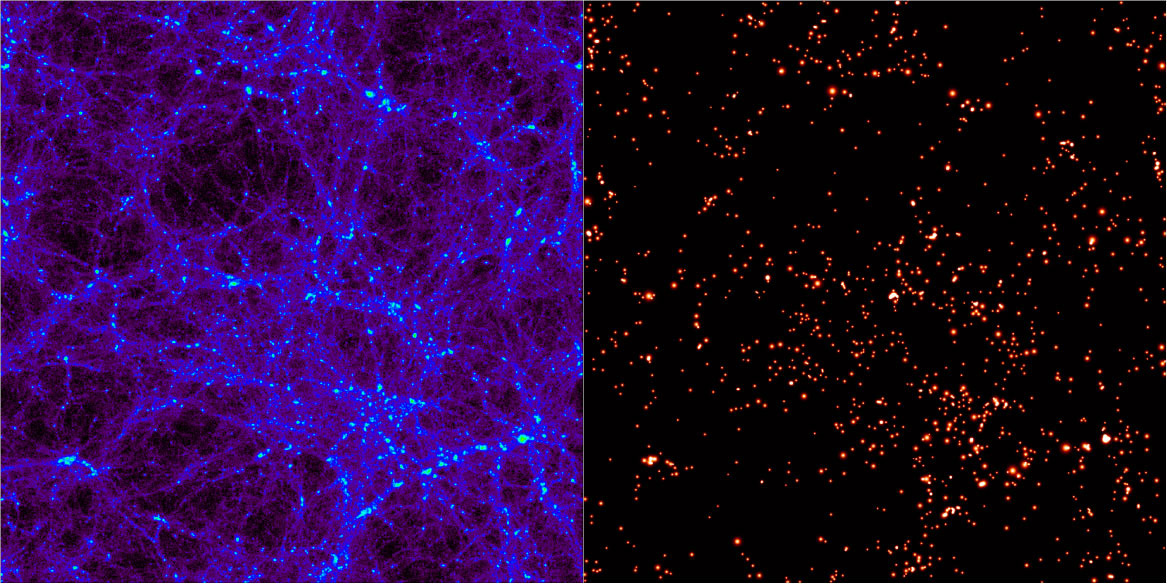
The distribution of dark matter when the universe was about 3 billion years old, obtained from a numerical simulation of galaxy formation. The left panel displays the continuous distribution of dark matter particles, while the right panel highlights the dark matter halos for the formation of star-bursting galaxies with a minimum dark matter halo mass of 300 billion times that of the sun.
Narrowing Down Dark Matter's Mass By Studying Dwarf Galaxies
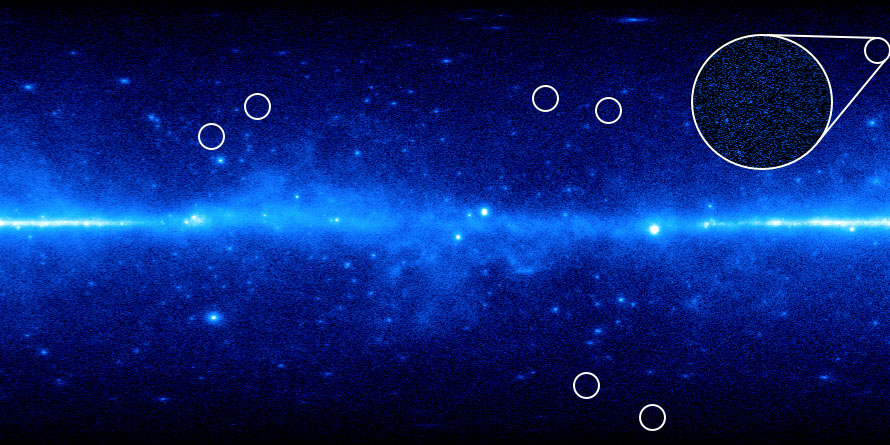
This is a view of the universe from NASA's Fermi Gamma-ray Space Telescope. Physicists at Brown University studied seven dwarf galaxies (circled in white). Their observations indicate those galaxies are full of dark matter because their stars’ motion cannot be explained by their mass alone, making them ideal places to search for dark matter annihilation signals.
Universe's Dark Matter
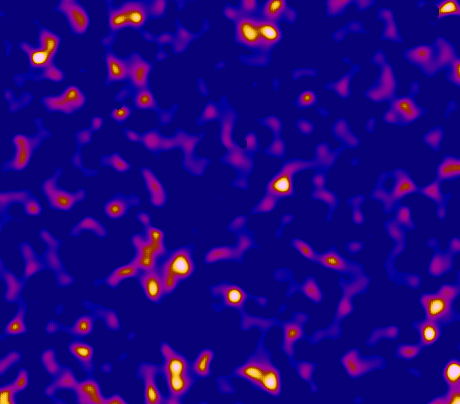
Dark matter in the universe is thought to be distributed as a network of gigantic dense (light) and empty (dark) regions, where the largest dense regions are about the size of several Earth moons on the sky.
Comparison of Normal Matter and Dark Matter's Large Scale Structure
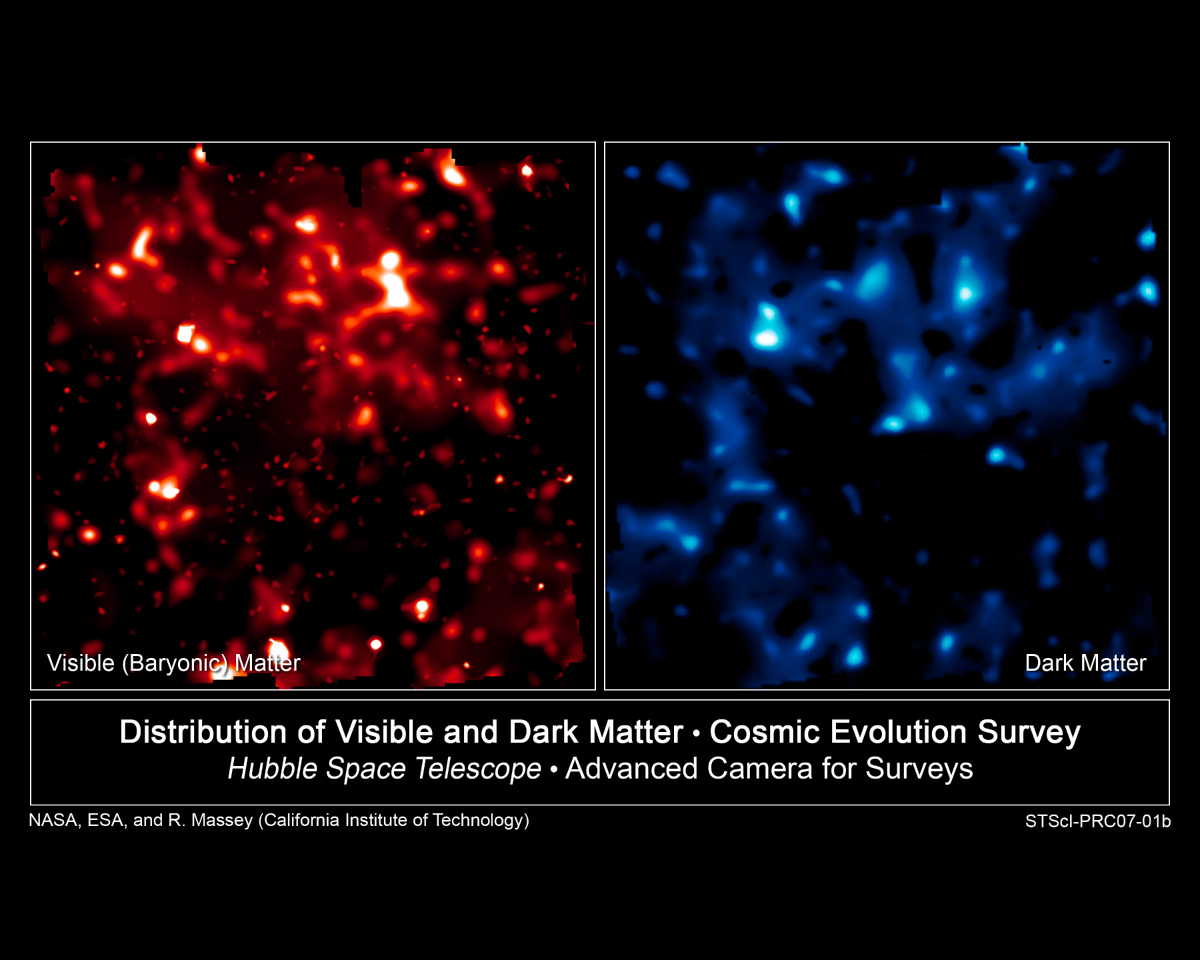
This false-color image, taken by the Hubble Space Telescope, compares the distribution of normal matter (red, left) to that of dark matter (right, blue). Dark matter makes up most of the matter of the universe, but can be viewed only by its gravitational effects. The HST’s ability to capture the warping of space helped scientists to measure the distribution of dark matter. Astronomers think dark matter could have powered the first stars.
Get the Space.com Newsletter
Breaking space news, the latest updates on rocket launches, skywatching events and more!
Mystery Swirls Around 'Dark Stars'
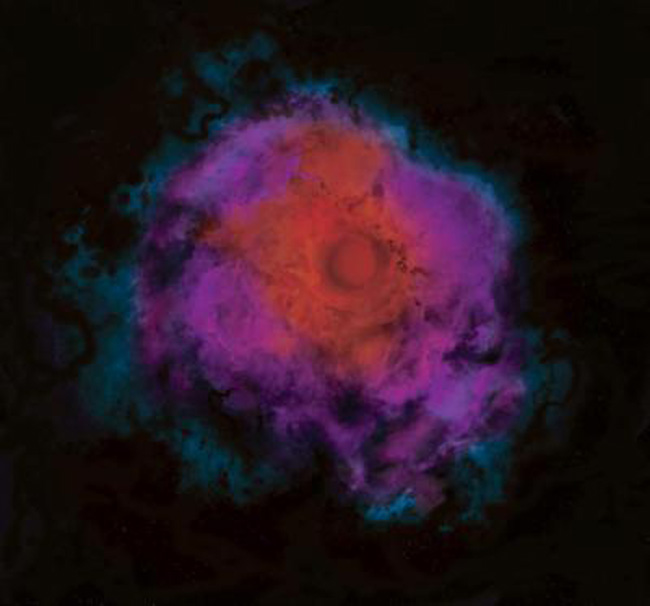
This artist's conception shows what an invisible "dark star" might look like when viewed in infrared light that it emits as heat. The core is enveloped by clouds of hydrogen and helium gas. A new University of Utah study suggests the first stars in the universe did not shine, but may have been dark stars.
Join our Space Forums to keep talking space on the latest missions, night sky and more! And if you have a news tip, correction or comment, let us know at: community@space.com.

Space.com is the premier source of space exploration, innovation and astronomy news, chronicling (and celebrating) humanity's ongoing expansion across the final frontier. Originally founded in 1999, Space.com is, and always has been, the passion of writers and editors who are space fans and also trained journalists. Our current news team consists of Editor-in-Chief Tariq Malik; Editor Hanneke Weitering, Senior Space Writer Mike Wall; Senior Writer Meghan Bartels; Senior Writer Chelsea Gohd, Senior Writer Tereza Pultarova and Staff Writer Alexander Cox, focusing on e-commerce. Senior Producer Steve Spaleta oversees our space videos, with Diana Whitcroft as our Social Media Editor.









